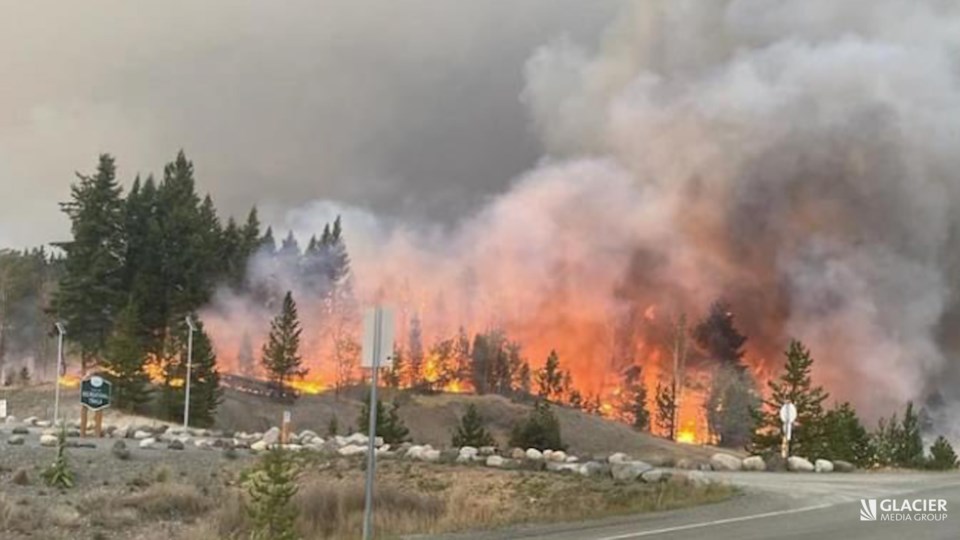We got our first sip of wildfire smoke coming from the west a couple of weeks ago, and it didn't feel well.
Wildfires broke out in Canada as early as May this year, mainly affecting B.C. and Alberta so far. The fires threatened Canada's largest oilfields, with Fort McMurray particularly impacted. The neighbourhoods of Beacon Hill, Abasand, Prairie Creek and Grayling Terrace were ordered to evacuate.
Canada's 2023 wildfire season was like no other in the country's history, with about 18.5 million hectares of land burned (the last record was set in 1989 with 7.6 million hectares consumed by fire). However, with this early start and continuously dry conditions, it doesn't seem that we'll have a break this year.
One may say that forest fires have always been a part of Canada's natural landscape. They definitely were. Wildfires play an important role in the forest regeneration process as well as in maintaining ecological balance. However, the intensity and frequency of forest fires have seriously escalated in recent years, posing threats to the environment, human health and the economy.
The most significant factor contributing to the increase in forest fires is climate change. Since Canada has a large land mass, much of which is located at high northern latitudes, warming across Canada has been about twice the global average, and in the Canadian Arctic, the warming has been about three times higher.
This rise in temperatures leads to drier conditions, creating a perfect environment for wildfires. Extended periods of heatwaves and reduced precipitation dry out forests, making them vulnerable to fires.
Climate change has also altered weather patterns. As a result, we see more frequent and severe storms, which often come with lightning – a natural ignition source. This combination of dry conditions and increased lightning strikes has been a recipe for disaster.
Climate change sets the stage, but human activity is often the spark. Many fires are caused by human negligence or intentional acts. Campfires left unattended, discarded cigarettes, and sparks from equipment are all recorded causes of catastrophic blazes. Urban expansion into forested areas increases the likelihood of human-caused fires and puts more communities at risk.
But human inaction also costs. One thing I noticed during my first-ever visit to a national park in Canada was how many dead trees were just lying there, turning into the perfect fuel for a forest fire. In Europe and Russia, forests I've seen were much cleaner, as dead wood gets removed one way or another. (In some areas, people are allowed to come and take it for their needs; in other regions the government cleans it.)
Why isn't it done here? My only assumption was a prohibitive cost of taking dead wood away. However, prescribed burns, which mimic natural fire cycles, while also costing money, can help reduce the amount of flammable material in forests and lower the risk of uncontrolled wildfires, thus also lowering the consequences in the long run.
And the consequences of wildfires are profound.
From the ecological perspective, entire ecosystems can be destroyed, with plant and animal species losing their habitats and often lives. The loss of forest cover reduces biodiversity. In addition, it can lead to soil erosion and degradation of water quality in nearby reservoirs.
Beyond the immediate destruction, forest fires release huge amounts of carbon dioxide and other greenhouse gases into the atmosphere, further worsening climate change in a vicious cycle. Then, the loss of trees, which act as carbon sinks, diminishes our ability to offset these emissions.
Human health is another part of the equation, as it is also severely impacted by forest fires, not only in the areas of the cataclysm but halfway across the country. Smoke from wildfires contains fine particles that can penetrate deep into the lungs, causing respiratory issues, cardiovascular problems and worsening pre-existing conditions.
The economic toll of forest fires is hard to underestimate. The costs of firefighting efforts are substantial. Infrastructure damage, including the destruction of homes and businesses, results in billions of dollars in losses. Tourism, a fundamental industry in many forested regions, suffers in the short and long terms. Some of the other long-term economic impacts include the loss of timber resources and the costs associated with health care for those affected by smoke and fire-related illnesses.
Bad all around, right?
Mother Nature is hard to negotiate with, but there are still many things everyone, from grassroots to first-hand leaders, could do.
From watching our fires, equipment and cigarette buds, to addressing climate change, improving forest management, and enhancing firefighting capabilities, Canadians can at least try to turn the tide on this growing catastrophe.
With these first smoke waves already making it to Saskatchewan, the summer seems to be hazy, and if we don't act, this and the next ones may be even worse.






